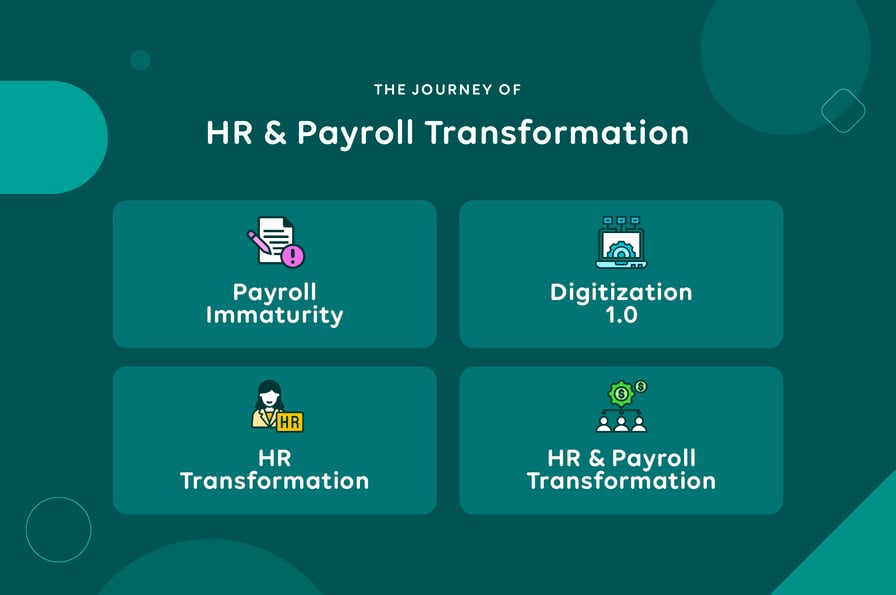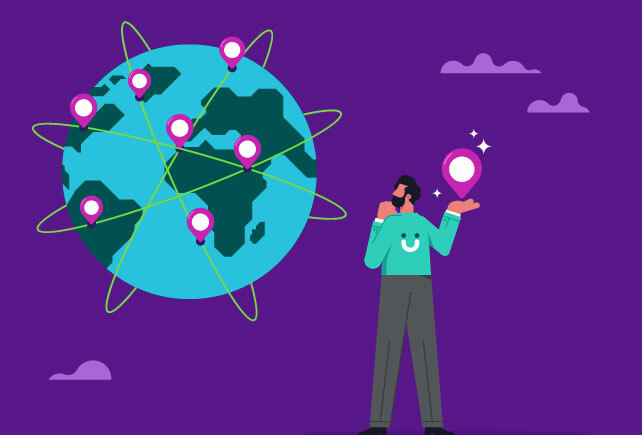The world as we know it is changing. It is getting smaller as we become more connected. Companies are increasingly globalized. Fast-paced technology improvements are affecting our processes, and Covid has dramatically changed our ways of working.
Human Resources departments around the world are adopting new operating models to adjust. These models adopt agile principles, streamline the employee experience, and re-empower frontline leaders to better manage data and processes.
I, Fiona Dardis, Director of Product Management at UKG, recently gave a webinar on the evolution of Global Payroll and HR, and how these can integrate with each other and with Workforce Management (WFM). Primarily, I went over these topics:
Emerging HR Models
A recent McKinsey article delineated several concrete forms for new HR models. These HR models involve several key features, including:
-
Individualized service
-
Productized HR
-
Integrated design & delivery with end-to-end accountability
-
Moving from process excellence to data excellence
-
Automated HR systems to drive efficiency
The Ulrich+ model leans on human resource business partners (HRBPs) to take over execution responsibility from Centers of Excellence (CoEs).

The Agile model reduces the number of HRBPs and CoEs, focusing more on management advice and deep expertise.
The EX-driven model focuses excellence on targeted “moments of matter”, relying on standardized processes for other HR matters.
The Leader-led model transfers leadership tasks to line managers and enables them with intelligence, HR tools, and services. This model minimizes strict policies outside of legal and compliance.
The Machine-powered model automates most HR processes and decisions with AI tools. Humans within HR focus more on counsel and advice.
Each of these models is designed to meet the challenges of the modern workforce. They do so in slightly different ways, meaning that each is suitable more for certain organizations than others. In addition, each organization will face its own challenges in attempting to implement any one of these solutions.
Evolution of Global Payroll
There are four major trends in global payroll that are affecting the industry.
The workforce is becoming more dispersed. Many people are able to work practically anywhere they have an internet connection. The employee base is becoming more transient, deskless, and many demand earned wage access (EWA).
Talent is more available globally. In addition to a local workforce that is becoming more dispersed, companies now have access to workers in foreign countries that previously they would not have been able to employ.
As a result of these two factors, companies are becoming more globalized. It is not uncommon for even small companies to have a wide international footprint across multiple countries.
Finally, the employee experience is shifting to support transient, deskless employees. This requires simplified experiences and reduced onboarding, as well as end-to-end onboarding on all systems.
The Journey of HR and Payroll Transformation
In order to meet the needs of today’s business environment, companies without outdated HR and payroll systems have an urgent need to update their operations.

This transformation takes place across four steps:
-
Payroll Immaturity
-
Digitization 1.0
-
HR Transformation
-
HR & Payroll Transformation
At the stage of Payroll Immaturity, a company manages all countries with separate strategies and budgets. This stage is characterized by inconsistency, poor employee experiences, and admin-heavy processes.
During Digitization 1.0, companies begin to separate HR and payroll systems for each country. The employee experience is still disconnected, there is limited visibility of information, and there are typically separate self-service portals for each country.
When a company goes through HR Transformation, a company will have a single, consistent HR system of record across countries. This improves culture and global visibility and makes the HR team more focused on strategic values and tasks.
Finally, when reaching HR & Payroll Transformation, companies have fully integrated their HR and payroll systems. This produces a high ROI, consistent global HR and payroll processes, and limited risk and legislation challenges. Such integration relies on high levels of automation and cross-departmental data and insights.
Any company that goes through this integration process will have better outcomes in the form of:
But this is not the end of the story. Companies can go beyond just integrating HR with payroll.
Human capital management, payroll, and workforce management can combine together to produce tremendous value for an organization.
The state of the art in HCM is the full integration of each of these domains into a single source of truth. This provides several benefits, including:
Conclusion: 21st Century Payroll is Here

Almost a quarter of the way through this century, many companies remain stuck in the payroll processes of the past. This undoubtedly causes countless hours of wasted work, numerical errors, and compliance issues.
With the ubiquity of a transient and foreign workforce, old-fashioned payroll and HR are simply not an option. Companies need to lean into modern data and automation solutions to ensure that their employees are paid fairly, on time, and in accordance with local laws.
Fortunately, the path towards this solution is well established. Companies can and do move from payroll immaturity to full HR and payroll integration.
We recorded a webinar focusing on the integration of HCM, payroll, and WFM. Learn more about these topics here.








